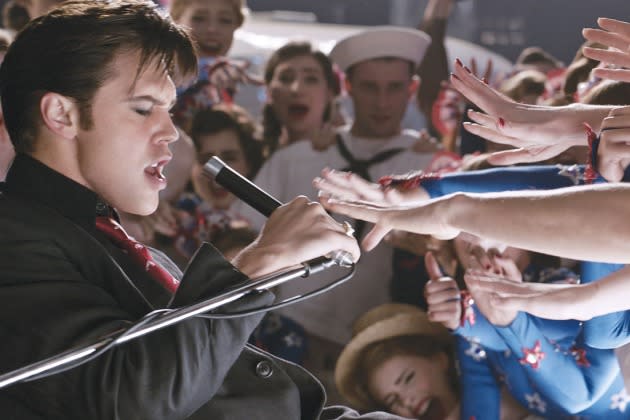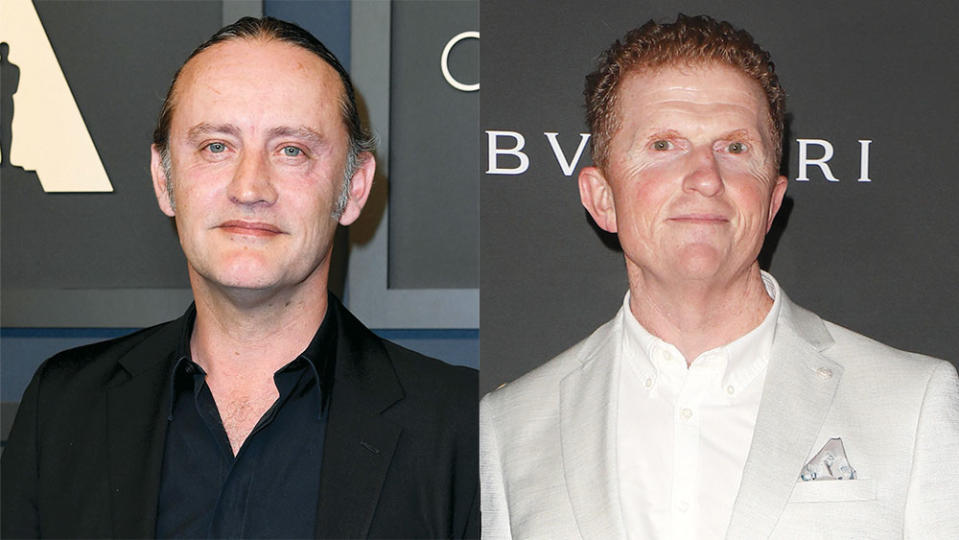‘Elvis’ Editors on Recreating Presley’s Concert Sequences: “We Leaned Into the Freneticism”
- Oops!Something went wrong.Please try again later.
- Oops!Something went wrong.Please try again later.
- Oops!Something went wrong.Please try again later.
- Oops!Something went wrong.Please try again later.

Elvis — nominated for eight Oscars including best picture — offers a bold look at the life of Elvis Presley while capturing the zeitgeist of the period.
But Jonathan Redmond and Matt Villa, Oscar-nominated editors and longtime collaborators of Baz Luhrmann, say the director was adamant that his movie, starring Austin Butler as the King of Rock ‘n’ Roll, would not be a conventional biographical film.
More from The Hollywood Reporter
How 'All Quiet on the Western Front' Captured the Tense and Brooding Tones of War
Diane Warren Performs Her 14 Oscar-Nominated Songs in Six Minutes (Exclusive Video)
'Awards Chatter' Podcast -- Malala Yousafzai ('Stranger at the Gate')
Luhrmann crafted a film that combines electrifying performances, drama and archival material while using Elvis’ manager, Colonel Parker (Tom Hanks), as a narrative device to tell the story. The editors say the experience was shaped by starting with 650 hours of principal photography and another 350 hours of archival material. Each performance was treated as an action set piece that told a different part of Presley’s story while showcasing the flamboyant singer; for instance, the film features Presley’s 1954 debut Louisiana Hayride performance, which helped launch his career. “We really leaned into the freneticism of that performance and showing the electricity onstage and the fact that this was something never before seen,” Villa says, adding that they cut that performance in a quick, exciting and fun way.

A few years later at Russwood Park, Presley’s performance is one of defiance against the colonel’s direction. “We started off slowly and lulling Colonel Parker into a sense that he’s going to do the right thing,” says Villa. “When he starts his wiggle, we realize that he’s going to stand true to himself, and it becomes quite a grungy performance, and sexy and energetic.”
When Presley arrives in Las Vegas to perform at the then International Hotel, the editors cut between his electric “Suspicious Minds” performance onstage and the colonel as he negotiates a multiyear residency from the audience. “Colonel Parker was signing Elvis’ life away while Elvis is giving this most extraordinary performance onstage,” says Villa.
The editors marveled at Butler, who has been nominated for an Oscar, and his takes throughout the movie, with Redmond noting, “It was really hard at times to cut away from Austin’s performance. But Baz was pretty clear that we weren’t making a concert film. We were making a narrative drama with a lot of music.”
Meticulous research and archival material were used starting in preproduction to build a template for the performance sequences and as placeholders during production. The footage also was used in various parts of the movie, including combining it with shots of Butler in the “Burning Love” montage. Redmond notes that Elvis studio Warner Bros. owns the rights to Elvis on Tour and Elvis: That’s the Way It Is. “They were good enough to go back into the salt mines and to dig out the original camera negative and scan all that material, so we had access to a huge swath of never-before-used footage from those concerts,” he says.
They also turned to archival footage for the film’s heartbreaking, final performance of “Unchained Melody,” which was shot just a few months before Presley’s death in 1977. Redmond admits that Elvis Presley’s estate was at first hesitant to give permission for its use, as it’s clear that something isn’t right, though it’s a powerful performance. “He sang like a god, and Baz was keen on giving Elvis the last word in the movie.”
This story first appeared in a Feb. stand-alone issue of The Hollywood Reporter magazine. To receive the magazine, click here to subscribe.

